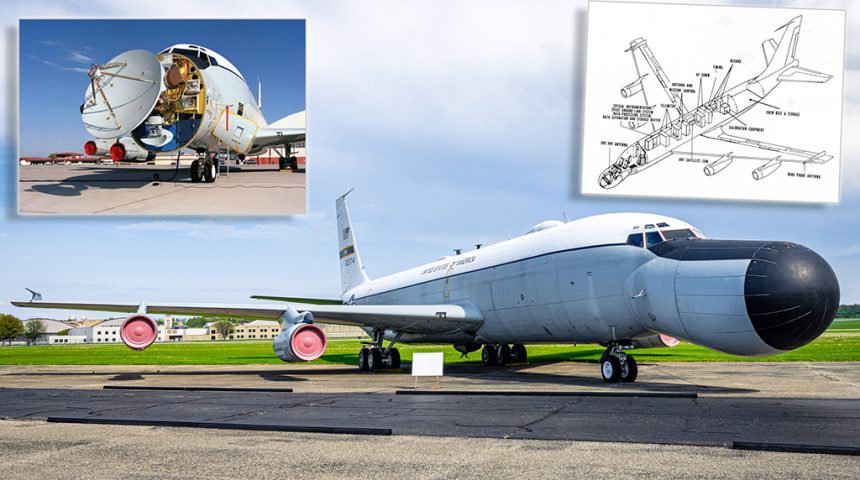A look at the Boeing EC-135E Apollo/Advanced Range Instrumentation Aircraft.
In the 1960s, NASA’s program to the Moon was in full swing. A major part of that mission, was being able to track the spacecraft and their crew as they traveled through space, through a network of tracking stations throughout the globe. This was something that not just NASA needed, but also the U.S. Air Force for their missile tests. Initially this would be achieved through land based tracking stations, with the later addition of shipboard systems, however it was quickly discovered that large gaps in tracking coverage existed, as the sea based stations, while critically important, were not fast enough to keep up. A further solution was needed to support the missions.
In order to supplement the land and sea based tracking stations, a plan was devised to cover the telemetry gaps using a high speed aircraft. This aircraft would have added instrumentation for tracking of NASA manned missions, to include covering Trans Lunar Injection, that could also be used by the Air Force for orbital and re-entry tests of ballistic missiles. As a result, a jointly funded project between NASA and the USAF converted eight C-135 aircraft into EC-135N models, at a cost of $4.5 Million per aircraft. The new aircraft, named Apollo Range Instrumentation Aircraft, were designed by NASA’s Goddard Spaceflight Center in Greenbelt Maryland, and were modified by Douglas Aircraft in Tulsa Oklahoma.

New instrumentation housed within the aircraft included a 7 foot diameter P and S-band receiving dish in the nose, probe antennas on the wings, and a trailing wire HF antenna. Other exterior modifications included the addition of several new antennas, for post mission data transmission, and satellite communications. In addition to the exterior modifications, extensive interior modifications to contain the support electronics and crew positions were done as well. These modifications gave the aircraft a highly distinct appearance, with the 7 foot dish being located in a new bulbous nose. This unusual look, led to the aircraft affectionately being dubbed “Snoopy” by her crews.
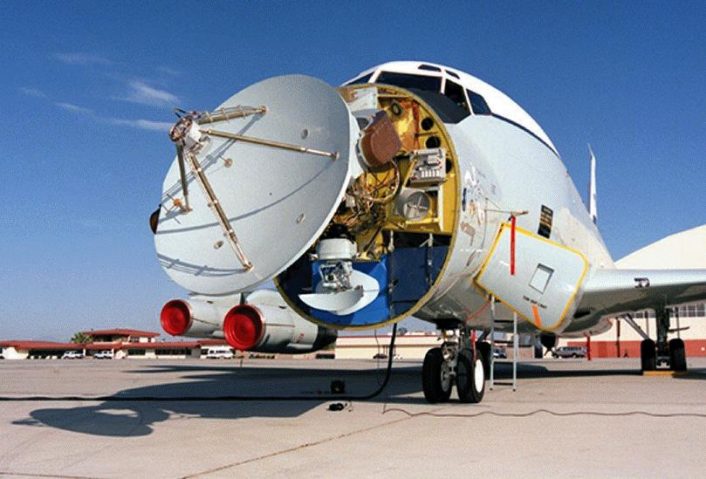
ARIAs were primarily based out of Patrick Air Force Base, just south of Cape Canaveral in Florida, and were operated for NASA by the U.S. Air Force Eastern Test Range. While not always at Patrick, ARIAs could also be found in Australia, in cities such as Perth, Townsville, and Darwin. During the Apollo missions, ARIAs would fly where they were needed, and would receive and record the telemetry data of the spacecraft on magnetic tape recorders. In addition to this, they were also used as a receiving and transmitting base for verbal capsule communications between Houston and the spacecraft. The recorded telemetry data could either be held for post mission analysis, or could even be re-transmitted over different bands in real time.
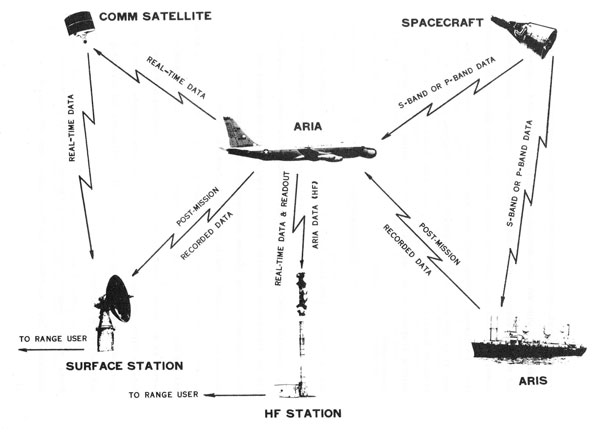
ARIA was not just an aircraft system. On base at Patrick AFB, was ARIA Control, also known as the Aircraft Operations Control Center. AOCC served as a co-ordination base for the program. In the rare event that all 8 ARIA aircraft were flying, the program contained 30% of NASA’s Near Earth tracking capabilities. For that very reason, AOCC was the 3rd mission control for NASA, behind Houston, and Goddard Spaceflight center. ARIA’s ability to rapidly deploy to anywhere on the globe was a critical necessity to the Apollo and Skylab programs, and without it, the missions arguably may have not succeeded.
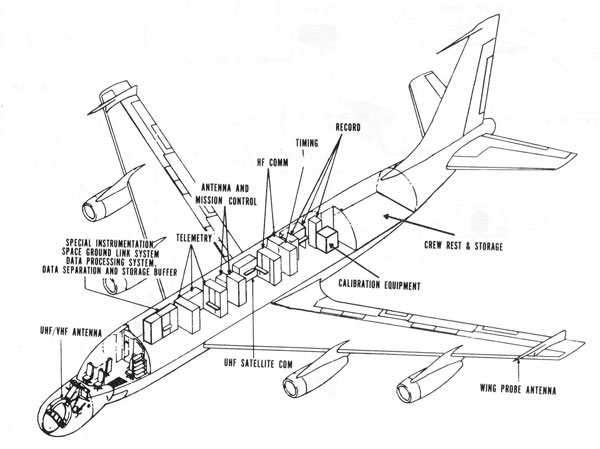
Following the conclusion of the Apollo and Skylab programs in 1975, the ARIA jets was re-designated as Advanced Range Instrumentation Aircraft and all operations were moved to the 4950th Test Wing at Wright-Patterson Air Force Base at Dayton, Ohio. ARIA’s mission would continue at Wright, being used as a rapidly deployed test aircraft used to obtain telemetry during DOD Missile tests. Notably, the fleets time at Wright included a re-engine of the ARIAs, resulting in a re-designation to EC-135E. Further continuing the legacy of the ARIA, in 1982 the USAF purchased eight Boeing 707-320C’s from American Airlines and converted them to ARIA aircraft, designating these 8 as EC-18Bs. The EC-18Bs were larger than the EC-135Ns, and were capable of carrying additional cargo, and taking off from shorter runways.

In 1994, the ARIA fleet was again relocated, this time to Edwards Air Force Base in California, as part of the 452nd Flight Test Squadron, in the 412th Test Wing. During this time reduction in forces were occurring, and advances in satellite technologies made the ARIA aircraft obsolete. On Aug. 24, 2001, the final active EC-18B made her final flight from Edwards AFB to Wright-Patterson AFB, ending a legacy of spaceflight milestones and missile testing.
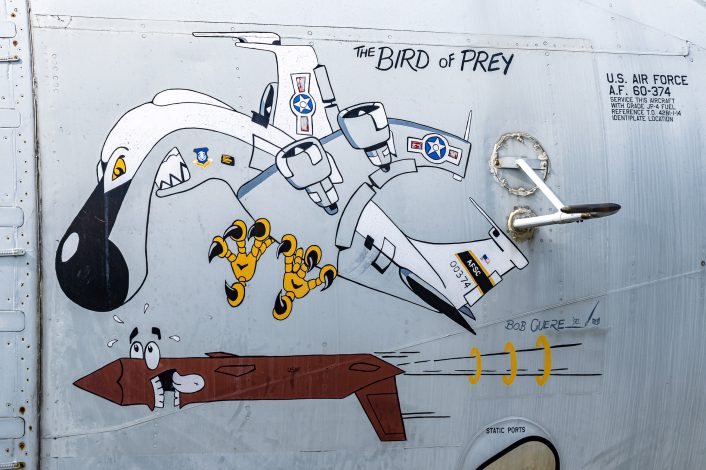
Throughout the program, ARIA supported many mission tests for both NASA and the DOD. Of those, program support includes names such as Apollo, Skylab, Pioneer, and Mariner for NASA, with names like Polaris, Poseidon, Trident, Minuteman I, II, & III, Pershing, and the Titan III-C for the DOD. The system showed its worth through a wide variety of different technical systems that each required their own unique planning and support, demonstrating the versatility and importance of the ARIA system.
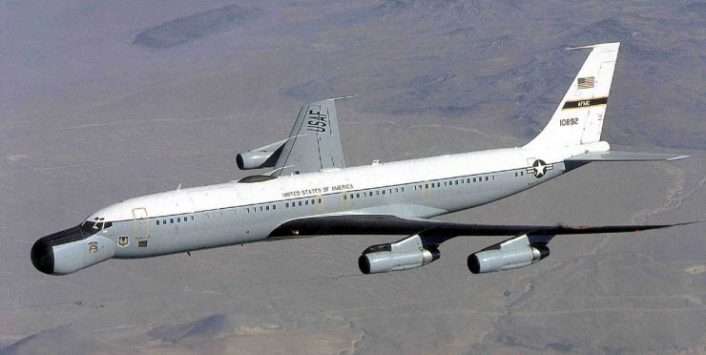
Today, only one single ARIA remains, having avoided scrapping at the boneyard. This survivor, number 60-0374, resides in the outdoor air park at the National Museum of the U.S. Air Force in Dayton Ohio, its former home. 0374 is one of the 8 original Apollo aircraft, and was constructed as a C-135A in 1960. In 1966 she underwent conversion to EC-135N, and was delivered to Patrick AFB in September of 1967. January 1st, 1968 saw 0374 begin her operational life as an ARIA, and she would be used throughout the Apollo and Skylab program. In December of 1975 she was transferred to Wright Patterson AFB in Dayton OH, and would be converted to an EC-135E in June of 1982. 1994 saw her transfer to Edwards AFB in California, and in 2000, she made her final flight to the National Museum of the USAF in Dayton, where she is permanently retired for display. Eventually, she will be restored and placed inside a hangar, after another museum expansion.

